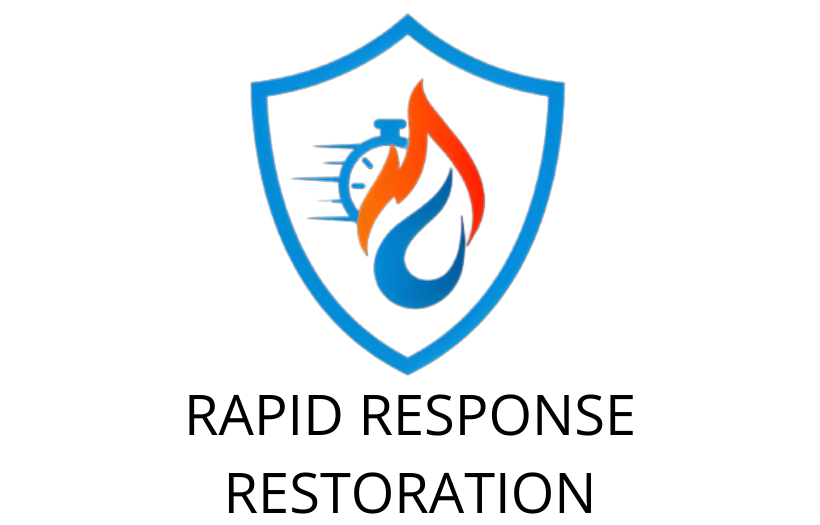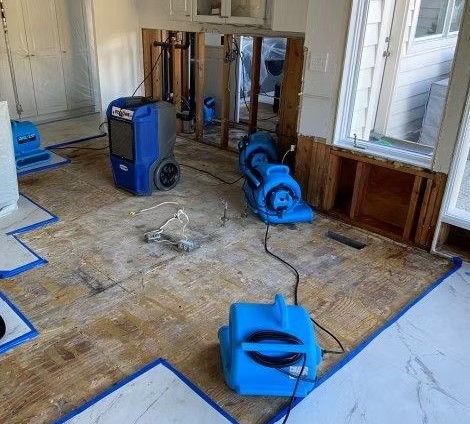How Water Damage Restoration Works: A Step-by-Step Process
Water damage can strike unexpectedly—whether from burst pipes, flooding, storms, or sewage backups. Left untreated, it leads to mold growth, structural damage, and health hazards. Understanding the water damage restoration process helps homeowners act quickly and minimize long-term damage.
In this guide, we’ll break down:
Emergency steps to take when water damage occurs
The 5-stage professional restoration process
How to handle insurance claims
When to call a water mitigation company
For 24/7 emergency water removal and flood damage repair, Rapid Response Restoration provides fast, certified restoration services.
Common Causes of Water Damage
Water damage comes from various sources, each requiring specific cleanup approaches:
Burst or Leaking Pipes
Cause: Frozen pipes, corrosion, or high water pressure.
Solution: Shut off the main water supply immediately.
Flooding & Storm Damage
Cause: Heavy rain, hurricanes, or overflowing rivers.
Solution: Pump out standing water and disinfect affected areas.
Sewage Backups
Cause: Clogged sewer lines or municipal system failures.
Solution: Requires professional sewage cleanup services (biohazard risk).
Appliance Malfunctions
Cause: Broken washing machines, water heaters, or dishwashers.
Solution: Turn off the appliance and extract water quickly.
Roof Leaks & Ceiling Damage
Cause: Missing shingles, ice dams, or cracked flashing.
Solution: Patch leaks and dry out attic/ceiling spaces.
Immediate Steps to Take After Water Damage
Stop the Water Source
Shut off the main water valve for burst pipes.
Place buckets under ceiling leaks.
Turn Off Electricity
Avoid electrocution—stay away from standing water near outlets.
Document the Damage
Take photos/videos for insurance claims.
Remove Valuables & Furniture
Move items to a dry area to prevent further damage.
Call a Water Restoration Company
Rapid Response Restoration offers emergency water removal 24/7 to prevent mold and structural issues.
Warning:
Avoid DIY sewage cleanup—it’s a biohazard.
Don’t use regular vacuums for water extraction.
The 5-Step Water Damage Restoration Process
Professional restoration follows a structured approach to ensure thorough cleanup and safety.
Step 1: Inspection & Damage Assessment
Technicians use moisture meters and thermal imaging to detect hidden water.
Determine the water contamination category (clean, gray, or black water).
Step 2: Water Extraction & Removal
Industrial pumps and wet/dry vacuums remove standing water.
Submersible pumps handle large-scale flooding.
Step 3: Drying & Dehumidification
High-speed air movers circulate air to evaporate moisture.
Commercial dehumidifiers reduce humidity levels.
Monitoring ensures complete drying (usually 3–5 days).
Step 4: Cleaning & Sanitizing
Antimicrobial treatments prevent mold growth.
Odor removal techniques (ozone, hydroxyl) eliminate musty smells.
Content restoration for salvageable furniture and belongings.
Step 5: Repairs & Reconstruction
Replace damaged drywall, flooring, and insulation.
Structural repairs for compromised beams or foundations.
Specialized Water Damage Services
1. Mold Remediation After Water Damage
Mold grows within 24–48 hours of water exposure.
Professionals use HEPA vacuums and antifungal solutions.
2. Sewage Cleanup Services
Requires biohazard safety protocols.
Disinfectants kill harmful bacteria and viruses.
3. Ceiling & Drywall Repair
Cut out and replace wet drywall to prevent sagging.
Treat water-stained ceilings before repainting.
4. Carpet Water Damage Cleanup
Extract water and lift carpets to dry padding.
Steam cleaning removes contaminants.
How Long Does Water Damage Restoration Take?
Minor leaks: 1–3 days (drying only).
Moderate flooding: 5–7 days (with repairs).
Severe damage (sewage, mold): 1–3 weeks.
Factors affecting timeline:
Extent of water saturation
Type of water (clean vs. contaminated)
Structural materials affected
Does Insurance Cover Water Damage Restoration?
Depends on the cause:
Covered: Burst pipes, storm damage (if you have flood insurance).
Not covered: Negligence (e.g., ignored leaks).
Document everything for your claim.
Tip: Rapid Response Restoration works directly with insurers to streamline claims.
How to Prevent Future Water Damage
Inspect plumbing annually for leaks.
Install a sump pump in basements.
Clean gutters to prevent roof leaks.
Upgrade washing machine hoses to steel-braided lines.
When to Call a Water Mitigation Company
Standing water that won’t drain.
Sewage backups (black water contamination).
Mold growth (musty smell, visible spores).
Ceiling/wall sagging from water weight.
Rapid Response Restoration provides 24/7 emergency water damage services, including:
Flood damage repair
Storm damage restoration
Mold remediation
Conclusion
Water damage worsens rapidly—quick action prevents costly repairs. Whether you need emergency water extraction, sewage cleanup, or structural drying, Rapid Response Restoration delivers fast, professional recovery. Need immediate help? Contact us for 24/7 water damage restoration!



Leave A Comment